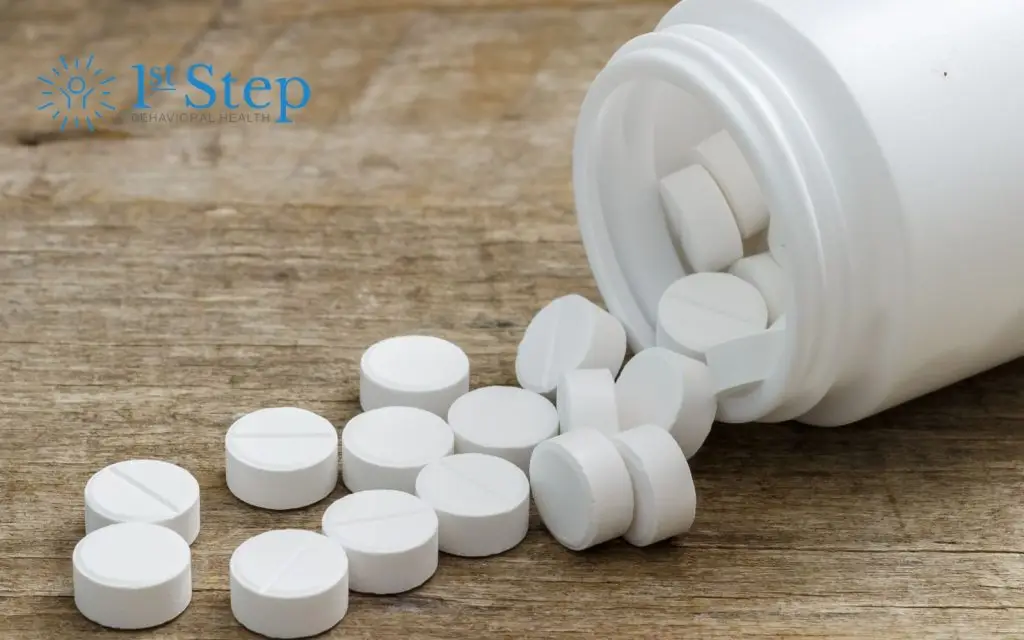Trazodone is a prescription medication commonly used to treat major depressive disorder and, in some cases, anxiety and insomnia. While it is not typically considered highly addictive in the same way as opioids or illicit drugs, stopping trazodone—especially after long-term use or at higher doses—can still lead to withdrawal symptoms. Understanding the trazodone withdrawal timeline and treatment options is essential for anyone considering discontinuing the drug.
This article offers an informative guide to help individuals manage trazodone withdrawal symptoms safely and effectively under proper medical supervision.
Understanding Trazodone and Its Uses
Trazodone is an antidepressant that works by affecting serotonin levels in the brain. Though it has sedative effects and is sometimes prescribed off-label for insomnia, its primary FDA-approved use is to treat depression.
Because trazodone is a prescription antidepressant, many assume it doesn’t carry risks associated with other drugs. However, that assumption can be misleading. Even though trazodone is not classified as physically addictive, it can still cause uncomfortable symptoms when stopped abruptly, especially after extended use.
Is Trazodone Addictive?
While trazodone addiction in the traditional sense is rare, psychological dependence can occur. People may feel they need the drug to sleep or function daily, particularly if they’ve taken it for a prolonged period.
Unlike some other substances, trazodone doesn’t usually cause cravings. Still, stopping trazodone suddenly may trigger withdrawal symptoms due to how the body adapts to its presence. These reactions are often referred to as antidepressant discontinuation syndrome, which includes both physical and emotional responses.
Why Do Withdrawal Symptoms Occur?
Withdrawal symptoms from trazodone occur because the brain has adjusted to functioning with the drug’s effects. Over time, your body adapts to the chemical changes trazodone causes in serotonin regulation. When the medication is stopped abruptly or without a proper tapering schedule, the sudden absence can disrupt brain function, leading to symptoms such as mood swings, anxiety, insomnia, and even physical discomfort.
Although not everyone will experience withdrawal, individuals who have been taking trazodone for an extended period or at higher doses are more likely to feel these effects.
Common Trazodone Withdrawal Symptoms
Withdrawal symptoms can vary widely depending on individual health, dosage, length of use, and whether other drugs or prescription medications are involved.
Common trazodone withdrawal symptoms include:
- Insomnia and sleep disturbances: Difficulty falling or staying asleep
- Anxiety and agitation
- Mood swings and irritability
- Depression or worsening of existing depression
- Nausea or vomiting
- Headaches
- Fatigue
- Dizziness
- Brain zaps: Electrical shock-like sensations in the head
- Flu-like symptoms
- Painful erection (in rare cases)
- Blood pressure changes
Some people may experience more severe withdrawal symptoms, particularly if the drug is stopped “cold turkey.”
The Trazodone Withdrawal Timeline
The trazodone withdrawal timeline can vary significantly, but it generally follows a few key stages. Here is an overview of what to expect during each phase of the withdrawal process.
First 1–3 Days (Initial Phase)
During the first 24-72 hours, the body begins to react to the absence of the medication. Symptoms like anxiety, insomnia, and irritability often begin. You may experience physical symptoms such as headaches, nausea, or brain zaps.
The acute stage of withdrawal can be very challenging. It is critical to have mental health and medical support to manage your symptoms during this time.
Day 4–7 (Peak Phase)
The peak phase occurs sometime around days four to seven and is often the most intense part of the withdrawal process. Physical withdrawal symptoms such as dizziness, nausea, and sleep disturbances may peak. People may also experience intense emotional symptoms like mood swings or depression. Pre-existing mental health conditions may worsen temporarily.
Week 2–4 (Adjustment Phase)
After around two weeks, the body starts adjusting to functioning without trazodone. Many acute symptoms begin to fade, though lingering effects like sleep issues or emotional instability may remain.
After 4 Weeks (Prolonged Period)
Some people continue to experience mild symptoms for several weeks or even months, especially if the medication was taken for a long time. These lingering symptoms can include fatigue, anxiety, and trouble sleeping.
Every stage of withdrawal presents its own challenges. It is important to have consistent supervision and support to help you manage your symptoms and stay on track in your recovery.
Risk Factors for Severe Withdrawal
Certain individuals are at a higher risk for experiencing more severe withdrawal symptoms, including those who stop taking trazodone abruptly (cold turkey), people who have been on trazodone for an extended period, and individuals on higher doses.
The risk for severe withdrawal symptoms may also be higher for those with a history of substance use or mental health disorders, and those also taking other medications or other antidepressants. To reduce these risks, it’s essential to follow a tapering schedule developed by a healthcare professional.
Safe Strategies for Managing Trazodone Withdrawal
There are several therapies and strategies people can use to reduce the risk of severe withdrawal symptoms and ensure a safe, complete detox. Here is an overview of the types of care available to keep you on track throughout detox.
Medical Supervision
Always consult your doctor before stopping trazodone. Tapering the dose gradually under medical supervision is the safest way to minimize withdrawal symptoms. Your healthcare provider may adjust the tapering plan based on your response and the specific symptoms you experience.
Medical Detox
In some cases—especially if combined with other substances—a supervised medical detox may be recommended. Detox helps manage withdrawal symptoms in a safe and controlled environment with access to medical support.
Comprehensive Treatment
If underlying mental health issues such as major depressive disorder or anxiety are present, a comprehensive treatment plan can help. This may include therapy, medication management, and holistic approaches to address the root causes of depression or insomnia.
Supportive Care
Self-care during withdrawal is essential. Get plenty of rest, stay hydrated, and engage in gentle exercise. Avoid illicit drugs and alcohol and follow all of your treatment team’s guidelines. Finally, connect with supportive friends or family and stay socially active. You may also benefit from professional counseling to help navigate emotional symptoms.
How to Prevent Relapse
Withdrawal can be a vulnerable time. To prevent relapse, it’s crucial to be proactive in your approach to long-term recovery.
A relapse prevention plan might include:
- Staying in close contact with your healthcare provider
- Attending therapy or support groups
- Considering non-drug strategies to treat depression or anxiety
- Avoiding sudden medication changes without medical guidance
If trazodone was used primarily for sleep, exploring alternatives for insomnia—like cognitive behavioral therapy for insomnia (CBT-I)—can reduce reliance on medication.
Trazodone vs. Other Antidepressants
Compared to other antidepressants, trazodone tends to have fewer withdrawal issues in some cases, but that doesn’t mean the symptoms are insignificant. Every individual’s experience is different, and the withdrawal process should be approached with care.
It’s also worth noting that the half-life of trazodone (about 5–13 hours) means it leaves the body relatively quickly, which can sometimes make withdrawal feel more abrupt.
Recognizing the Need for Help
Trazodone withdrawal can be challenging, even if you do not have known risk factors for severe withdrawal symptoms. It is critical to seek treatment to manage dangerous symptoms as soon as you notice them.
Some signs you may need help include:
- Having suicidal thoughts
- Exhibiting symptoms of severe depression
- Being unable to sleep for several days
- Experiencing new or worsening panic attacks
- Having dangerous blood pressure changes
These may indicate that you require more intensive support or adjustments to your treatment.
Find Treatment and Support Now
Discontinuing trazodone is a personal decision that should always involve your doctor or healthcare professional. Whether you’re stopping due to side effects, lack of effectiveness, or transitioning to other drugs, doing so safely can reduce distress and support long-term recovery.
If you or a loved one is struggling with trazodone withdrawal or trying to treat major depressive disorder holistically, know that help is available at First Step Behavioral Health. You are not alone in this process. Contact our specialists to explore our comprehensive treatment programs or to schedule an intake appointment now.
Frequently Asked Questions (FAQ) About Trazodone Withdrawal
1. Can trazodone withdrawal affect appetite or digestion?
Yes, some individuals report changes in appetite, nausea, or digestive upset during withdrawal. These symptoms are typically temporary but may be uncomfortable. Eating small, balanced meals and staying hydrated can help manage these effects. If digestive issues persist, consult a healthcare provider.
2. Is it safe to switch from trazodone to another antidepressant?
Switching medications should only be done under the supervision of a medical professional. In some cases, your provider may use a cross-tapering strategy—gradually decreasing trazodone while introducing another antidepressant—to minimize withdrawal symptoms and maintain mood stability.
3. How long should a trazodone tapering schedule last?
The tapering duration varies based on the dose, the duration of your trazodone use, and your individual health. A taper might last anywhere from a couple of weeks to several months. Your doctor will customize the schedule to reduce the risk of withdrawal and relapse.
4. Are there any natural remedies that can help with withdrawal symptoms?
Some people find relief through non-medication strategies such as mindfulness, gentle exercise, magnesium supplementation, or herbal sleep aids like valerian root. However, natural remedies can interact with medications, so it’s best to consult your healthcare provider before trying them.
5. Can trazodone withdrawal mimic the return of depression or anxiety?
Yes, withdrawal can sometimes feel like a relapse, especially when emotional symptoms such as irritability or sadness emerge. This is why it’s important to have ongoing mental health support during the withdrawal process to distinguish between withdrawal effects and a potential return of your original condition.
6. Is trazodone withdrawal more difficult for older adults?
Older adults may be more sensitive to the effects of medication changes due to slower metabolism and other health factors. Withdrawal symptoms may be more pronounced or longer-lasting, making a slow, carefully monitored taper even more essential.
Sources
Jump to a Section
Call (855) 425-4846
